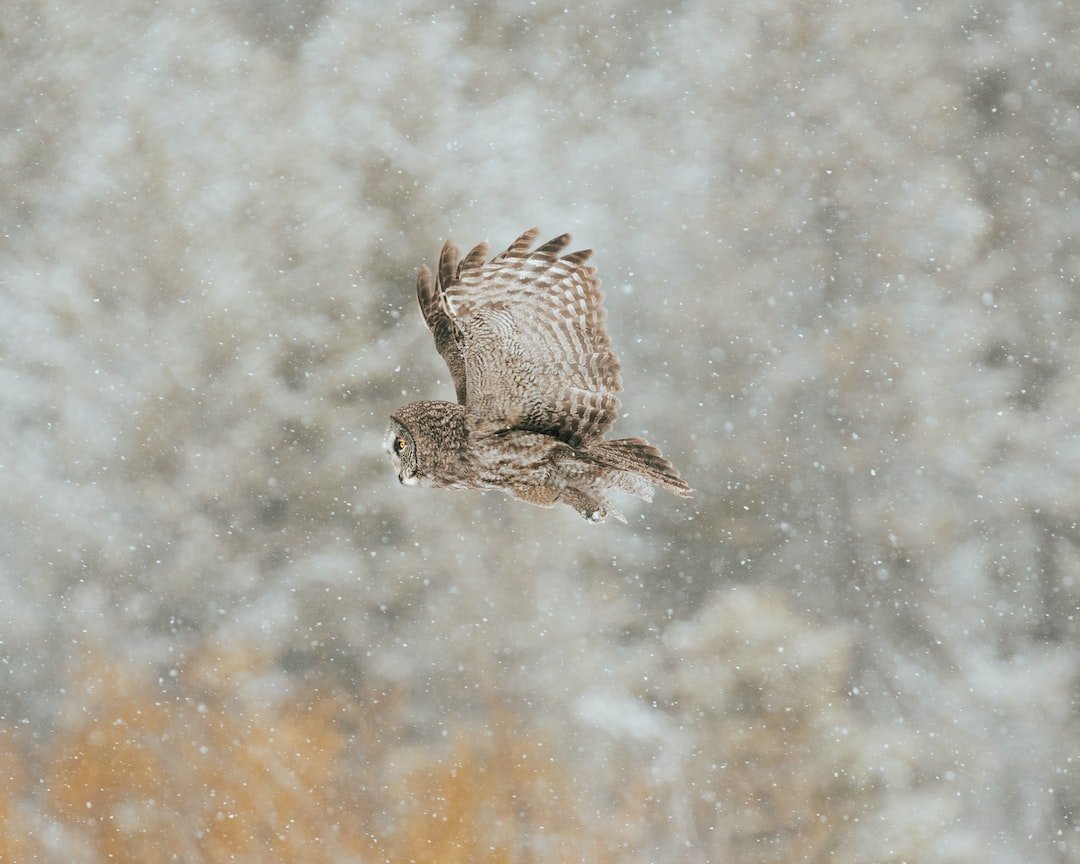Protecting the Silent Guardians: Conservation Breeding and Reintroduction Programs for Owls
Category : Owl conservation efforts | Sub Category : Conservation breeding and reintroduction programs for owls Posted on 2023-07-07 21:24:53

Protecting the Silent Guardians: Conservation Breeding and Reintroduction Programs for Owls
Introduction:
Owls have a mystery and beauty that has fascinated us. The birds of prey play a crucial role in maintaining the delicate balance of the world's ecosystems. Several owl species have faced declines in their populations due to habitat loss and other human-related activities. Conservators have implemented breeding and reintroduction programs to help these extraordinary creatures return to their natural habitats. In this post, we will discuss the importance of breeding and re-introduction programs for owls and show how much work is being done to protect them.
1 The significance of owls in the environment.
The owls are top predators in the natural world. They control rodents to prevent damage to crops and spread of disease. Maintaining the balance between prey and predator populations is an essential part of owls' job.
2 The need for breeding and reintroduction programs.
With increasing habitat destruction and other human activities threatening owl populations, the use of breeding and reintroduction programs has emerged as a powerful tool for their protection. These programs aim to restore dwindling owl populations by breeding owls in captivity and releasing them into their native habitats.
3 The programs for breeding animals.
Successful breeding of owl species in captivity is the focus of the programs. These programs use specialized facilities and expert care to provide a safe and nurturing environment for owls to reproduce. The breeding centers carefully select suitable mates, monitor the birds' health, and collect valuable data to improve breeding success rates. The owl populations have been helped by the programs.
4 Reintroduction programs.
captive-bred owls are released into carefully selected habitats where they can thrive. These owls are monitored and trained to survive in the wild before being released. Reintroduction programs help to return lost territories and also raise awareness about the plight of owls and the urgent need for their preservation.
5 Success stories.
There are several success stories from owl programs. Efforts to save the critically-endangered California Condor have been a significant part of the effort. The population of the Eurasian Eagle Owl has increased thanks to effective management.
6 The challenges are ahead.
The success of the programs has been achieved, but they face challenges. Habitat restoration, addressing the root causes of owl decline, and long-term monitoring of reintroduced populations are crucial for sustained conservativism.
Conclusion
Hope for the survival of owl species is offered by the programs. By providing a lifeline to these magnificent creatures, we can preserve their presence in our environment and also safeguard the intricate balance of the ecosystems. As stewards of the natural world, we have a duty to support these vital programs and secure a future where owls can continue to teach us.
Leave a Comment:
SEARCH
Recent News
- Zurich, Switzerland is not only known for its picturesque landscapes and vibrant culture but also for its diverse wildlife. While the city may be more commonly associated with its financial sector and luxury shopping, there are some rare and fascinating animals that call Zurich home.
- YouTube Content Creation: Showcasing Rare Animals through Translation
- If you are a nature enthusiast and love learning about rare and exotic animals, there are several YouTube channels dedicated to showcasing these fascinating creatures in their natural habitats. These channels provide a unique opportunity to educate yourself about lesser-known species and the importance of conservation efforts.
- The Importance of Developing Rare Skills Like a Rare Animal in the Workplace
- Women in Politics: Breaking Barriers and Making History
- Warsaw, the capital city of Poland, is not only known for its rich history and beautiful architecture but also for its unique and diverse wildlife. Despite being a bustling urban center, Warsaw is home to some rare and fascinating animals that can be found in various parks, forests, and reserves in and around the city.
- Vietnam is a country known for its rich culture, beautiful landscapes, and delicious cuisine. However, it is also home to a variety of rare and endangered animals that are found nowhere else in the world. In recent years, some Vietnamese businesses and companies have taken initiatives to help protect these precious species and their habitats.
- Vienna, the capital city of Austria, is known for its rich history, stunning architecture, and vibrant cultural scene. But did you know that Vienna is also home to a variety of rare and interesting animals? From exotic species at the Vienna Zoo to elusive wildlife in the surrounding countryside, there are plenty of fascinating creatures to discover in and around this beautiful city.
READ MORE
2 months ago Category : owlo

Zurich, Switzerland is not only known for its picturesque landscapes and vibrant culture but also for its diverse wildlife. While the city may be more commonly associated with its financial sector and luxury shopping, there are some rare and fascinating animals that call Zurich home.
Read More →2 months ago Category : owlo

YouTube Content Creation: Showcasing Rare Animals through Translation
Read More →2 months ago Category : owlo

If you are a nature enthusiast and love learning about rare and exotic animals, there are several YouTube channels dedicated to showcasing these fascinating creatures in their natural habitats. These channels provide a unique opportunity to educate yourself about lesser-known species and the importance of conservation efforts.
Read More →2 months ago Category : owlo
